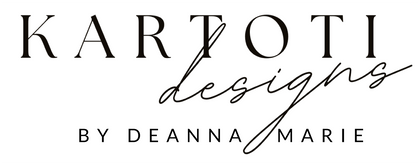Pitching can feel like a huge leap when you're first getting started in art licensing—but it's also one of the most empowering things you can do for your creative career. Getting your work in front of art directors is how you move your designs from your portfolio into the world of real products.
Below, I’ve compiled what I’ve learned and implement when pitching my own artwork to companies.
1. Research the Company Before You Pitch
Before sending any emails, do your homework. You want to make sure your style aligns with their product line and that they even license artwork in the first place.
Here’s what to look for:
-
Their website and product offerings – Do your designs make sense for them?
For example: If you create vintage florals and their line is all colorful abstracts, it’s probably not a fit. - Their Instagram account – A great place to see their products in context.
-
Artist submission guidelines – Sometimes hidden deep on their site. Search and dig!
Also, try to find something you can genuinely connect with or admire about the company. This is something you can include in your pitch email—whether it’s their commitment to sustainability, a cause they support, or something else that resonates with you. Even a simple line like, “I really love your product line,” shows that you’ve done your homework and taken the time to connect with their brand.
Can’t find licensing info?
It’s perfectly okay to send a direct message on Instagram:
“Hi! My name is and I’m a surface pattern designer and I love your product line. Do you accept artwork submissions for your designs? If so who can I forward my portfolio to?”
This has been good for me lately as they not only get the introduction but they can click on my handle and see my instagram and my work. So far I have gotten emails of who to send my work to this way.
2. Have Your Portfolio and Artist Info Ready
Before you hit “send,” make sure your materials are ready:
- A curated, professional portfolio (online, PDF, or both) - you can do this yourself - you are capable of making your portfolio look professional.
- A short artist bio or intro (I include this in both my PDF and online versions)
-
Your contact info (be sure to include across bottom of all the pages of your pdf portfolio - I explain why below)
Pro Tip: Add your contact information to the bottom of every page in your PDF portfolio. If a company prints out a single page and likes it months or even years later, your info will still be right there.
What I personally use:
- InDesign to create my PDF portfolios – I use the published link so I can update files without resending
- Adobe Portfolio – It comes with my Adobe subscription and is a clean way to present collections online
Either option works—the goal is to make viewing your work easy and enjoyable.
3. Track Your Outreach
Stay organized from the start.
You can use a simple spreadsheet in the beginning to track:
- Company name
- Contact person (if available)
- Address, website, and Instagram handle
- Notes on whether they license artwork
- Dates you’ve sent emails and follow-ups
Pro Tip: I started with Google Sheets, and later upgraded to Google Streak, which integrates with Gmail. I now use it to track pitches and send emails through their automated mail merge feature—such a time saver!
4. Write a Professional, Personal Pitch
Your pitch email doesn’t need to be long—it just needs to be clear, thoughtful, and relevant.
Include:
- A short intro of who you are
- Why you’re reaching out
- A link to your portfolio (PDF or online)
- An invitation to connect or collaborate
✨ Grab my downloadable email swipe files at the bottom of this post to get started if you’re not sure what to say.
5. Follow Up Gracefully
If you don’t hear back, it’s okay to follow up 2–3 weeks later with a simple, respectful message. Try:
“Just following up to see if you had a chance to view my portfolio. I’d still love to connect when the time is right.”
Unless someone tells you, “We don’t license artwork,” assume it’s a “not right now”—and keep going.
6. Don’t Take “No” Personally
It’s hard, I know. When you’re proud of your work and feel like it’s a perfect fit, a “no” can be crushing.
But here’s what I’ve learned:
Most of the time, that “no” is just “not right now.”
In fact, many of the rejections I received came with compliments—and I always reply with thanks and ask if I can reach out again in the future when I have new work. Almost every time, the answer is yes.
This is how cold contacts become warm connections.
So—don’t give up. Don’t stop pitching. Don’t stop creating.
Final Thoughts
Pitching is part art, part organization, and part mindset.
You’re not bothering anyone by sharing your work—you’re offering them a creative solution they might need at exactly the right time.
So do your research. Show up professionally. Keep putting your work in front of the people who could say yes.
You’re not behind. You’re becoming.
— Deanna Marie

PITCHING EMAIL SWIPE FILES FOR SURFACE PATTERN DESIGNERS
Confidently pitch your work to companies with ready-to-send email templates.
Get Them Here

